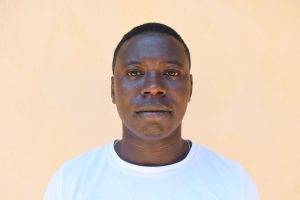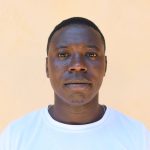In the community of Kithalani, there is a dire need for accessible water. At least 300 community members still have to walk up to a mile to the well and wait in long lines. The only other options are scoop holes (a representative photo can be seen below), which make people ill, stealing their health and time.
"Water is still a challenge to us. Due to [the] huge water need in our community, the available sand dams and shallow wells do not fully cater for [our] water needs; hence, we [need] to construct more sand dams [systems]. In August and September, it is very dry, and our shallow wells run dry due to [the] large number of people depending on them," said Field Officer Jefferson Mutie.

Even though there are sand dams and well systems in the community, they are still a great distance away from many people. Because there are so many people relying on those water points, people end up wasting excessive amounts of time, hoping for a turn to collect water.

"Before, I used to get water from Tyaa River, spending 2 hours to the river and back. The journey was very long and is replicated whenever we have a drought. I remember last year I came to get water, and the shallow well was dry, so I opted [for] a scoop hole, which also never spared me. [I] was forced to revive the old trek to Tyaa River. This triggered my late reporting to school and went on repeatedly as the drought lasted for quite some time," shared Mawia Mutemi, 18, seen below.

"We, the children, are the ones to fetch water whenever it is a dry month. Trekking all the way to River Tyaa makes my life feel [like] a bad one. I wish and adamantly hope that a day shall come when no one in our community will never be worried about fetching water, a day that every community member shall have access to safe, reliable, and clean water throughout the year," continued Mawia.
"I still walk around 1 km (over half a mile) to the river. The distance is big, and having another sand dam and shallow well would be centralized for other community members [and] me. There was a time I took dirty water from the school, [which] sent me to hospital for quite [a few] days. I don't like getting ill; it makes my life very hard and destabilized," said 42-year-old farmer Esther Mwavu, seen below.

Without easily accessible water, people must either waste all their time traveling to overcrowded wells that are potentially dry or long distances to scoop holes that are almost guaranteed to make them sick. Either option makes life unbearable in the Kithalani community.

Installing the sand dam will enable people like Esther and Mawia to end wasting time waiting on water or suffering from water-borne illnesses. Esther can prioritize life-improving activities, such as working on her farm. Children like Mawia can improve their attendance and performance in school, giving them a chance at a brighter future.
Helping to solve the water crisis in this community will take a multi-faceted system. It requires the collaboration of the sand dam and a protected dug well. They will work together to create a sustainable water source that will serve this community for years to come.
The Proposed Solution, Determined Together...
At The Water Project, everyone has a part in conversations and solutions. We operate in transparency, believing it benefits everyone. We expect reliability from one another as well as our water solutions. Everyone involved makes this possible through hard work and dedication.
In a joint discovery process, community members determine their most advantageous water solution alongside our technical experts. Read more specifics about this solution on the What We're Building tab of this project page. Then, community members lend their support by collecting needed construction materials (sometimes for months ahead of time!), providing labor alongside our artisans, sheltering and feeding the builders, and supplying additional resources.
Water Access for Everyone
This water project is one piece in a large puzzle. In Kenya, Sierra Leone, and Uganda, we're working toward complete coverage of reliable, maintained water sources that guarantee public access now and in the future within a 30-minute round trip for each community, household, school, and health center. One day, we hope to report that this has been achieved!
Training on Health, Hygiene & More
With the community's input, we've identified topics where training will increase positive health outcomes at personal, household, and community levels. We'll coordinate with them to find the best training date. Some examples of what we train communities on are:
- Improved hygiene, health, and sanitation habits
- Safe water handling, storage & treatment
- Disease prevention and proper handwashing
- Income-generation
- Community leadership, governance, & election of a water committee
- Operation and maintenance of the water point





 Sand Dam
Sand Dam
 Rehabilitation Project
Rehabilitation Project



























